Tennessee is home to several types of hawks, making it a great place to spot these amazing birds of prey. Hawks are known for their sharp eyesight and hunting skills, often seen soaring in the sky or perched high in trees. In this state, you can find different species like the Red-tailed Hawk, Cooper’s Hawk, and Sharp-shinned Hawk. Whether you’re a birdwatcher or just enjoy nature, learning about these hawks and where to find them can be a fun experience in Tennessee’s diverse landscapes.
10 Hawks in Tennessee
- Red-tailed Hawk – The most common hawk, easily recognized by its reddish tail.
- Cooper’s Hawk – A fast flyer, often seen in wooded areas.
- Sharp-shinned Hawk – Small but quick, usually found hunting small birds.
- Broad-winged Hawk – Known for its long migrations and short, broad wings.
- Northern Harrier – A hawk with a white patch on its back, often flying low over fields.
- Rough-legged Hawk – Seen in winter, with feathered legs for warmth.
- Red-shouldered Hawk – Has reddish shoulders and prefers forests near water.
- Swainson’s Hawk – Mostly seen during migration through Tennessee.
- Ferruginous Hawk – Rare in Tennessee, with rusty-colored feathers.
- Northern Goshawk – A large, powerful hawk, but not often seen in the state.
10 Hawks in Tennessee: A Detailed Guide
Tennessee is a beautiful state filled with diverse wildlife, including an impressive variety of hawks. Hawks are large birds of prey known for their sharp eyesight, powerful talons, and incredible hunting abilities. In this guide, we will explore 10 different hawk species you can find in Tennessee. Each hawk has unique characteristics that make them fascinating to watch. We will break down their appearances, habitats, diets, nesting habits, and some interesting facts. Let’s get started!
1. Red-Tailed Hawk
Overview
The Red-tailed Hawk is the most common hawk in Tennessee and across North America. You’ll often spot this hawk perched high on poles, trees, or even on fence posts, watching for prey. Its red tail feathers are its most well-known feature, giving this bird its name.
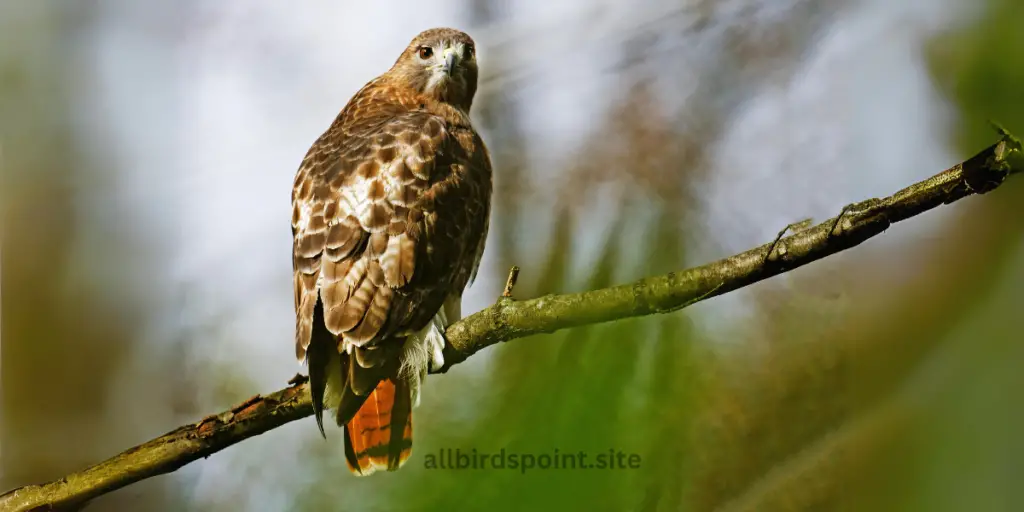
Appearance
The Red-tailed Hawk is a large bird, with a wingspan of about 4 to 5 feet. The top part of their body is brown, and the underside is lighter, with dark streaks across the chest. The most striking feature of this hawk is its reddish-brown tail, which is easy to see when the bird is flying. Young Red-tailed Hawks don’t have red tails until they are about one year old.
Where Can You Find Them?
Red-tailed Hawks are highly adaptable and can live in a wide variety of environments. You can find them in forests, grasslands, deserts, mountains, and even cities. They prefer open areas where they can easily spot small animals moving on the ground.
What Do They Eat?
Red-tailed Hawks are carnivores and are known for eating small mammals like mice, rabbits, and squirrels. They will also eat birds, reptiles, and even insects when necessary. They are patient hunters, often sitting in one spot for a long time before making a quick dive to catch their prey.
Nesting Habits
These hawks build large, sturdy nests high up in trees or on cliffs. They usually make their nests out of sticks, and they return to the same nest year after year, adding new materials to make it stronger. The female lays two or three eggs, and both parents take turns feeding and protecting the young hawks.
| Feature | Details |
|---|---|
| Scientific Name | Buteo jamaicensis |
| Lifespan | 10-15 years (up to 20 years in captivity) |
| Size | 18-26 inches (45-65 cm) |
| Wingspan | 3.5-4.5 feet (110-140 cm) |
| Weight | 1.5-3.5 pounds (0.7-1.6 kg) |
| Diet | Small mammals (mice, squirrels, rabbits), birds, reptiles |
| Habitat | Forests, grasslands, deserts, and cities |
Interesting Fact
Even though they are called Red-tailed Hawks, their tails are not red when they are born. The tail turns red after the bird’s first molt, usually around its second year of life.
2. Cooper’s Hawk
Overview
The Cooper’s Hawk is a medium-sized bird known for its incredible speed and agility. It is often found hunting small birds in suburban areas, forests, and woodlands. Because it can fly quickly through trees, it is one of the most skilled hunters among the hawks.

Appearance
Cooper’s Hawks are sleek birds with short, rounded wings and a long, narrow tail. They have a slate-gray back, and their chest is covered in reddish-brown streaks. Their eyes are bright red, which becomes more intense as they age.
Where Can You Find Them?
Cooper’s Hawks prefer wooded areas where they can easily hide and ambush their prey. However, they have adapted well to urban environments and can be found in parks and backyards, especially near bird feeders.
What Do They Eat?
Cooper’s Hawks are known for hunting other birds, such as pigeons, doves, and songbirds. They are fast fliers and can catch birds right out of the air. They also eat small mammals like squirrels and chipmunks when they get the chance.
Nesting Habits
Cooper’s Hawks build their nests in tall trees, using sticks and leaves to make a comfortable home. The female usually lays about three to five eggs, and both parents help raise the young. The male does most of the hunting while the female stays with the chicks.
| Feature | Details |
|---|---|
| Scientific Name | Accipiter cooperii |
| Lifespan | 12 years (up to 20 years in captivity) |
| Size | 14-20 inches (35-50 cm) |
| Wingspan | 2.5-3.5 feet (75-90 cm) |
| Weight | 0.7-1.5 pounds (0.3-0.7 kg) |
| Diet | Small to medium-sized birds, small mammals |
| Habitat | Forests, woodlands, urban areas |
Interesting Fact
Because they hunt so quickly and often fly through dense trees, Cooper’s Hawks sometimes crash into objects or trees while chasing their prey!
3. Sharp-Shinned Hawk
Overview
The Sharp-shinned Hawk is the smallest hawk found in Tennessee. Despite its small size, it is a fierce and fast hunter, preying mainly on small birds. It is often confused with the Cooper’s Hawk because they look very similar, but the Sharp-shinned Hawk is noticeably smaller.
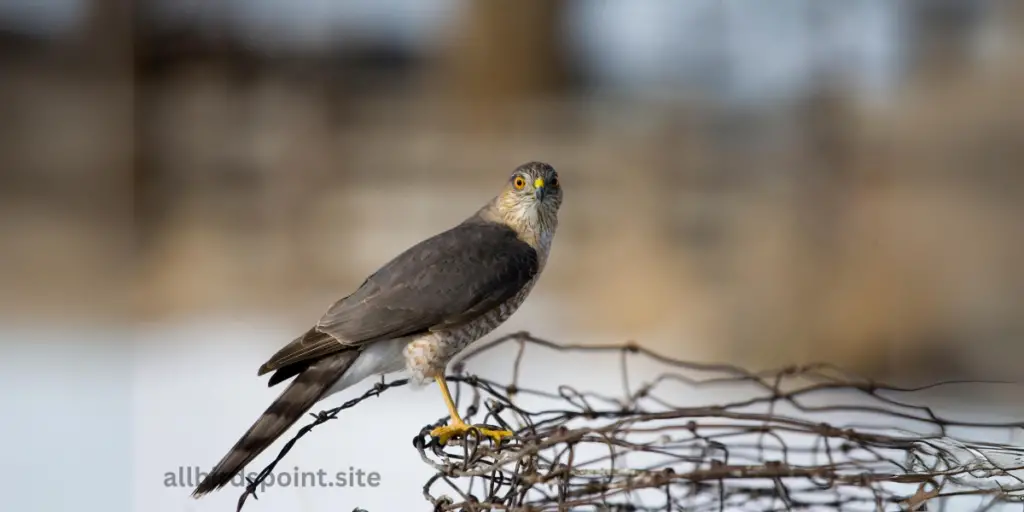
Appearance
Sharp-shinned Hawks have short, rounded wings and a long tail that helps them navigate through dense forests. Their back and wings are blue-gray, and their chest is covered in reddish bars. Their tail is square at the end, which is a good way to tell them apart from the Cooper’s Hawk.
Where Can You Find Them?
Sharp-shinned Hawks prefer dense forests where they can hide and surprise their prey. Like Cooper’s Hawks, they are sometimes seen near bird feeders, where they hunt small songbirds. They are more common in rural areas but can also be spotted in parks and suburban areas.
What Do They Eat?
These hawks primarily eat small birds like sparrows, finches, and robins. They are quick and stealthy hunters, often catching their prey in mid-air. Sharp-shinned Hawks also eat small mammals and insects, but birds make up most of their diet.
Nesting Habits
Sharp-shinned Hawks build their nests in tall trees, usually in a well-hidden spot. The nests are made of sticks and lined with soft materials like leaves. The female lays about four to five eggs, and both parents feed the chicks once they hatch.
| Feature | Details |
|---|---|
| Scientific Name | Accipiter striatus |
| Lifespan | 3-5 years (up to 13 years in captivity) |
| Size | 9-13 inches (23-33 cm) |
| Wingspan | 17-22 inches (43-56 cm) |
| Weight | 3-7 ounces (85-200 grams) |
| Diet | Small birds, insects, small mammals |
| Habitat | Dense forests, woodlands |
Interesting Fact
The Sharp-shinned Hawk is named for its long, thin legs, which look “sharp” compared to the thicker legs of other hawks.
4. Broad-Winged Hawk
Overview
The Broad-winged Hawk is a smaller hawk known for its impressive migration. Every fall, thousands of Broad-winged Hawks fly from North America to South America, forming large flocks called “kettles.” They are not seen as often as other hawks in Tennessee because they spend much of their time in the forest.
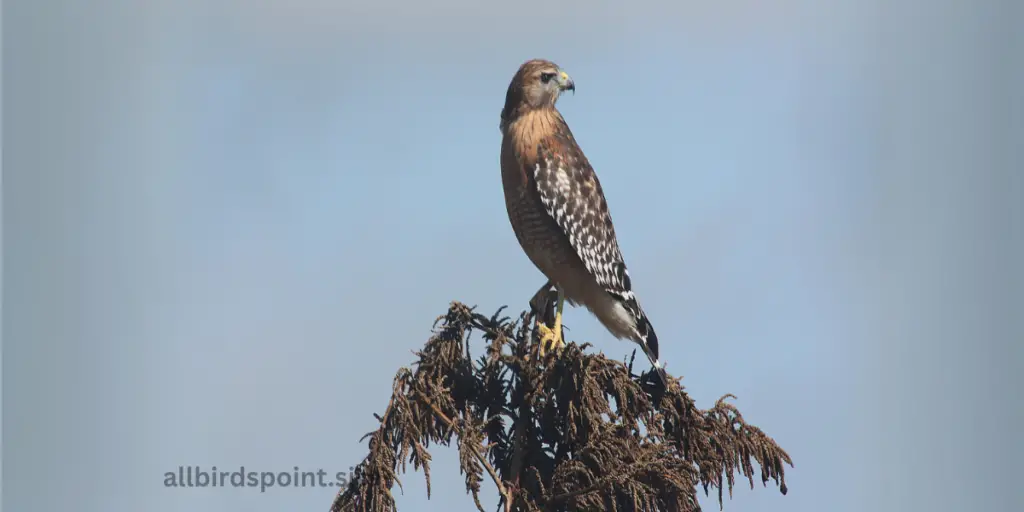
Appearance
Broad-winged Hawks are relatively small, with short, broad wings and a short tail. They have a brown back and reddish-brown head, while their belly is white with brown streaks. In flight, their broad wings give them a distinctive appearance.
Where Can You Find Them?
These hawks prefer forests, especially near rivers, lakes, or wetlands. During migration, however, they can be seen in large groups, flying high in the sky as they head south for the winter.
What Do They Eat?
Broad-winged Hawks mainly eat small mammals like mice and voles. They also hunt frogs, snakes, and large insects. They often sit in one spot for long periods, waiting for the right moment to strike.
Nesting Habits
Broad-winged Hawks build their nests in trees, often near the edge of the forest. The nests are made of sticks and lined with soft materials like leaves. The female lays two to three eggs, and both parents take care of the young until they are ready to fly.
| Feature | Details |
|---|---|
| Scientific Name | Buteo platypterus |
| Lifespan | 12 years (up to 16 years in captivity) |
| Size | 13-17 inches (34-44 cm) |
| Wingspan | 2.5-3 feet (75-100 cm) |
| Weight | 9-20 ounces (260-570 grams) |
| Diet | Small mammals, frogs, reptiles, insects |
| Habitat | Forests, especially near water sources |
Interesting Fact
Broad-winged Hawks migrate thousands of miles each year, sometimes traveling as far as South America! Watching these hawks migrate in large flocks is a spectacular sight for birdwatchers.
5. Northern Harrier
Overview
The Northern Harrier is a unique hawk known for flying low over fields and marshes as it hunts. It is one of the few hawks that use both its sharp eyesight and excellent hearing to find prey. Northern Harriers are easily recognized by the white patch on their lower back.
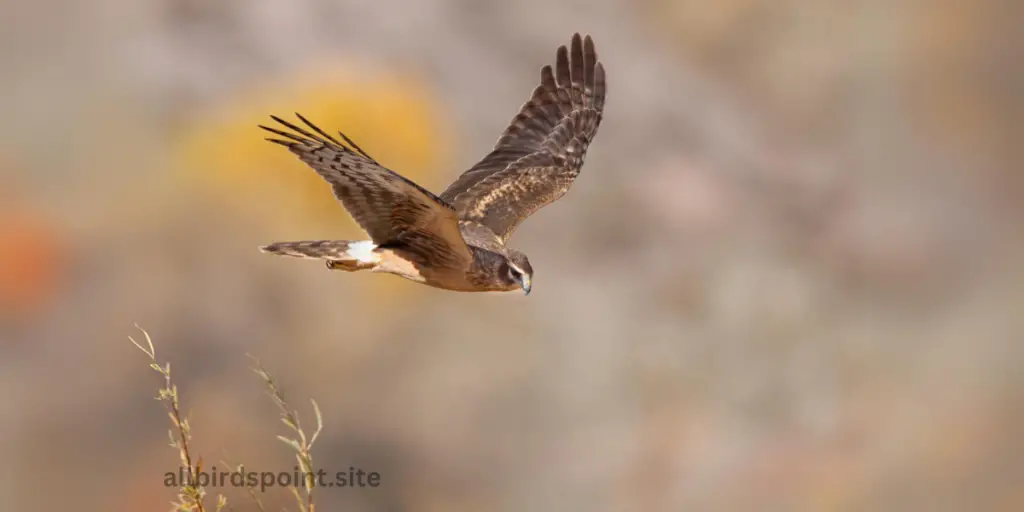
Appearance
Northern Harriers have long, narrow wings and a long tail. Males are gray with black wingtips, while females and juveniles are brown. The white patch just above their tail is one of the easiest ways to identify them.
Where Can You Find Them?
Northern Harriers prefer open areas like fields, grasslands, and marshes. They fly low to the ground, often gliding slowly as they search for small animals to catch. You are more likely to see them in rural areas rather than cities.
What Do They Eat?
Northern Harriers eat small mammals, birds, and reptiles. They often hunt mice, voles, and other rodents but will also catch small birds, frogs, and even insects. They hunt by flying low over the ground and diving quickly when they spot movement.
Nesting Habits
Unlike most hawks, Northern Harriers build their nests on the ground, usually hidden in tall grass or reeds. The female lays four to six eggs, and both parents take turns feeding and protecting the chicks.
| Feature | Details |
|---|---|
| Scientific Name | Circus hudsonius |
| Lifespan | 7-10 years |
| Size | 16-20 inches (41-50 cm) |
| Wingspan | 3.5-4.5 feet (100-120 cm) |
| Weight | 0.7-1.7 pounds (0.3-0.8 kg) |
| Diet | Small mammals, birds, reptiles, amphibians |
| Habitat | Marshes, fields, grasslands |
Interesting Fact
The Northern Harrier’s face is shaped somewhat like an owl’s, which helps it focus sound, allowing the hawk to hear small animals moving in the grass.
6. Rough-Legged Hawk
Overview
The Rough-legged Hawk is a winter visitor to Tennessee, arriving from its breeding grounds in the Arctic. This hawk is specially adapted for cold weather, with feathers that extend down its legs to keep it warm.
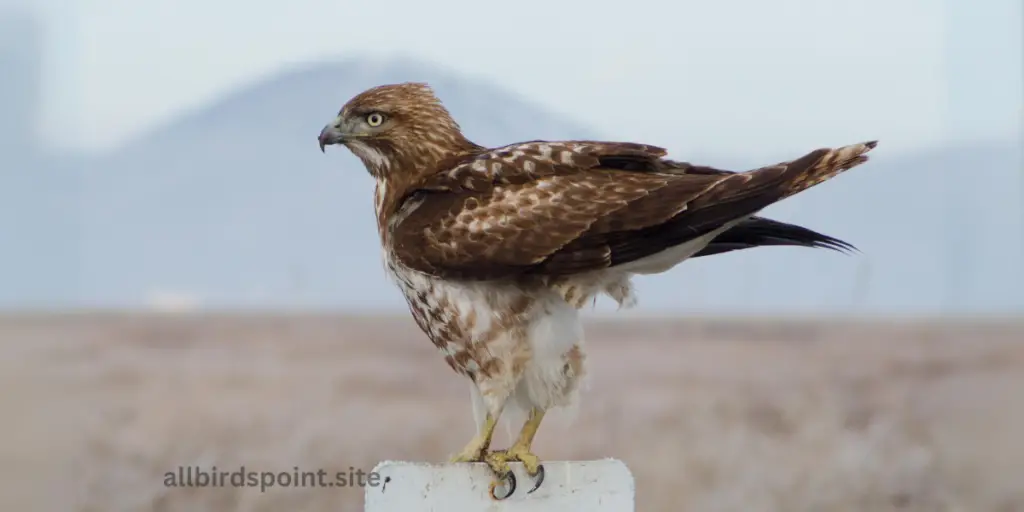
Appearance
Rough-legged Hawks are large birds with long wings and tails. They are brown with light-colored undersides and dark patches on their belly and wrists. Their legs are fully feathered, a feature that helps them stay warm in cold climates.
Where Can You Find Them?
In Tennessee, Rough-legged Hawks are most commonly seen in open fields and grasslands during the winter months. They are often found perched on fence posts or hovering in the air as they hunt for small mammals
like voles and mice.
What Do They Eat?
These hawks mainly hunt small mammals, such as voles, mice, and rabbits. Unlike many other hawks, Rough-legged Hawks often hover in place while looking for prey. Once they spot a target, they dive down quickly to catch it.
Nesting Habits
Rough-legged Hawks do not breed in Tennessee. They build their nests in the Arctic, usually on cliffs or rocky outcroppings. The female lays two to four eggs, and both parents feed the chicks once they hatch.
| Feature | Details |
|---|---|
| Scientific Name | Buteo lagopus |
| Lifespan | 10-18 years |
| Size | 18-24 inches (46-61 cm) |
| Wingspan | 4-5 feet (120-150 cm) |
| Weight | 2-3 pounds (0.9-1.4 kg) |
| Diet | Small mammals (voles, lemmings, rabbits), birds |
| Habitat | Open fields, tundra, grasslands (winter months) |
Interesting Fact
The Rough-legged Hawk gets its name from the feathers that cover its legs, all the way down to its toes. This is unusual for hawks and helps protect them from the cold in their Arctic homes.
7. Red-Shouldered Hawk
Overview
The Red-shouldered Hawk is known for its loud, piercing call and reddish-brown shoulders. This hawk is often seen in forests near rivers and wetlands, where it hunts for small animals. It is one of the most common hawks in Tennessee.
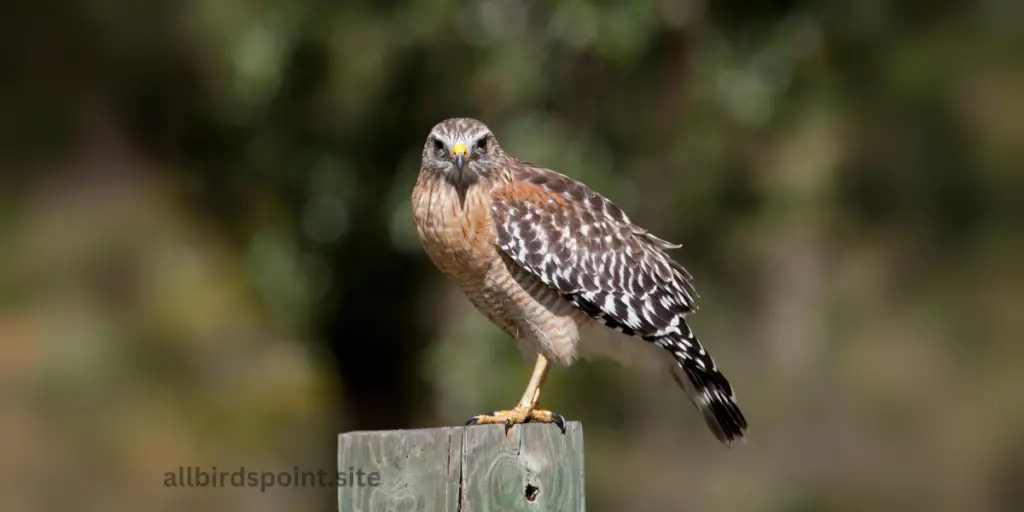
Appearance
Red-shouldered Hawks are medium-sized birds with reddish shoulders and a checkered pattern of black and white on their wings. Their tail is marked with broad black and white bands, and their chest is a warm, rusty color.
Where Can You Find Them?
These hawks live in forests, especially near water. You can often spot them perched high in trees, watching for prey below. They are common in both rural and suburban areas, as long as there are plenty of trees and water sources nearby.
What Do They Eat?
Red-shouldered Hawks eat a wide variety of animals, including small mammals like mice, amphibians like frogs, and reptiles like snakes. They also eat birds and large insects, making them versatile hunters.
Nesting Habits
These hawks build large nests high in trees, often near the edge of a forest. The nests are made of sticks and lined with softer materials like leaves and moss. The female usually lays three or four eggs, and both parents care for the young.
| Feature | Details |
|---|---|
| Scientific Name | Buteo lineatus |
| Lifespan | 10-20 years |
| Size | 17-24 inches (43-61 cm) |
| Wingspan | 3.5-4 feet (100-120 cm) |
| Weight | 1-1.7 pounds (0.5-0.8 kg) |
| Diet | Small mammals, amphibians (frogs), reptiles, birds |
| Habitat | Forests, especially near water |
Interesting Fact
Red-shouldered Hawks are very vocal and can often be heard before they are seen. Their call is a loud, repetitive “kee-ah, kee-ah,” which echoes through the forest.
8. Swainson’s Hawk
Overview
The Swainson’s Hawk is a migratory bird that passes through Tennessee on its way to its breeding grounds in the western United States and Canada. These hawks are known for their long-distance migrations, traveling as far as Argentina for the winter.
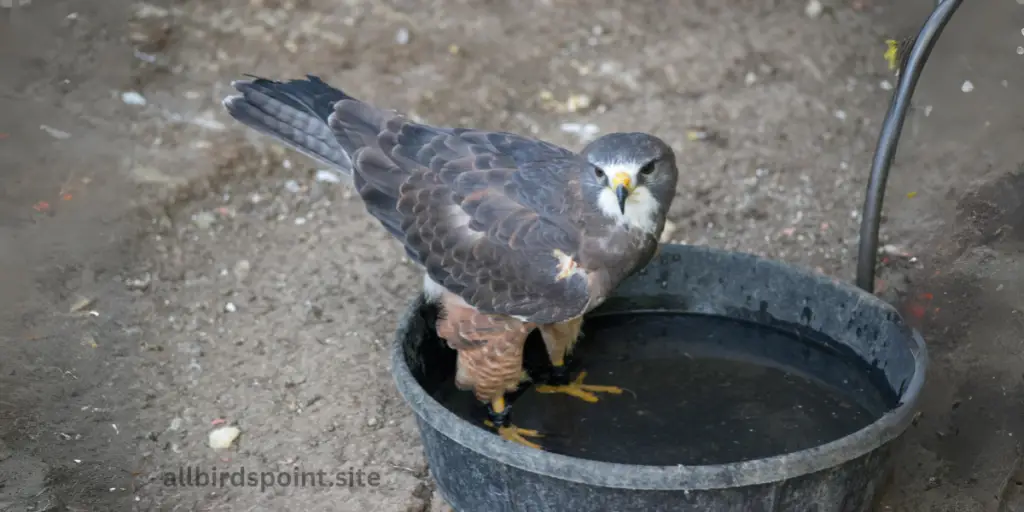
Appearance
Swainson’s Hawks are medium-sized with long, pointed wings and a slender body. Their back is brown, and their belly is pale, with a darker “bib” on their chest. Their wings are long and slender, making them excellent gliders.
Where Can You Find Them?
In Tennessee, Swainson’s Hawks are most often seen during migration in open areas like fields and grasslands. They are not common residents in the state but are sometimes spotted as they pass through.
What Do They Eat?
Swainson’s Hawks have a varied diet. In the summer, they eat mainly insects like grasshoppers, crickets, and beetles. They will also eat small mammals, birds, and reptiles. During migration, they rely heavily on insects for energy.
Nesting Habits
Swainson’s Hawks build their nests in trees or on cliffs, usually in open areas. The female lays two to three eggs, and both parents take care of the chicks. After the breeding season, they begin their long migration to South America.
| Feature | Details |
|---|---|
| Scientific Name | Buteo swainsoni |
| Lifespan | 12-15 years |
| Size | 18-22 inches (45-56 cm) |
| Wingspan | 4-4.5 feet (120-135 cm) |
| Weight | 1.5-2.5 pounds (0.7-1.2 kg) |
| Diet | Insects (grasshoppers), small mammals, birds |
| Habitat | Open fields, grasslands, agricultural areas |
Interesting Fact
Swainson’s Hawks are known for their incredible migrations. Some of these birds travel more than 6,000 miles from North America to Argentina, one of the longest migrations of any hawk species.
9. Ferruginous Hawk
Overview
The Ferruginous Hawk is one of the largest hawks in North America and is known for its rusty-red feathers. While rare in Tennessee, this hawk is occasionally seen during migration or winter.
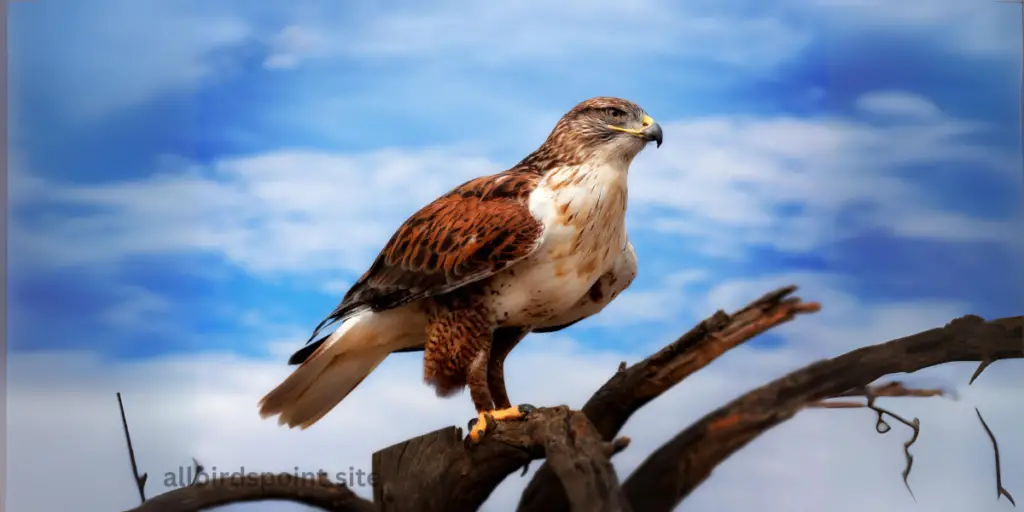
Appearance
Ferruginous Hawks are large, with a wingspan of up to 5 feet. They have broad wings and long legs. Their feathers are rusty-red, which is where they get their name, and their undersides are pale with dark patches.
Where Can You Find Them?
Ferruginous Hawks prefer open spaces like deserts and grasslands. In Tennessee, they are rare but can sometimes be seen during migration or in the winter months when they venture out of their usual range in the western United States.
What Do They Eat?
Ferruginous Hawks hunt large prey, including rabbits, prairie dogs, and ground squirrels. They are powerful hunters and use their sharp talons to catch and kill their prey. They are often seen soaring high above open areas, searching for their next meal.
Nesting Habits
These hawks build large nests out of sticks, sometimes using bones and other materials to strengthen the nest. They usually nest in trees or on cliffs. The female lays two to four eggs, and both parents take turns feeding and protecting the young.
| Feature | Details |
|---|---|
| Scientific Name | Buteo regalis |
| Lifespan | 15-20 years |
| Size | 22-27 inches (56-69 cm) |
| Wingspan | 4.7-5.5 feet (140-165 cm) |
| Weight | 2.5-4.5 pounds (1.1-2 kg) |
| Diet | Small to medium-sized mammals (rabbits, prairie dogs) |
| Habitat | Grasslands, deserts, open plains |
Interesting Fact
The Ferruginous Hawk builds the largest nests of any hawk species in North America. Some nests can be as wide as 3 feet and are reused for many years.
10. Northern Goshawk
Overview
The Northern Goshawk is a large, powerful hawk that is rarely seen in Tennessee. It is known for being aggressive and territorial, especially during nesting season.
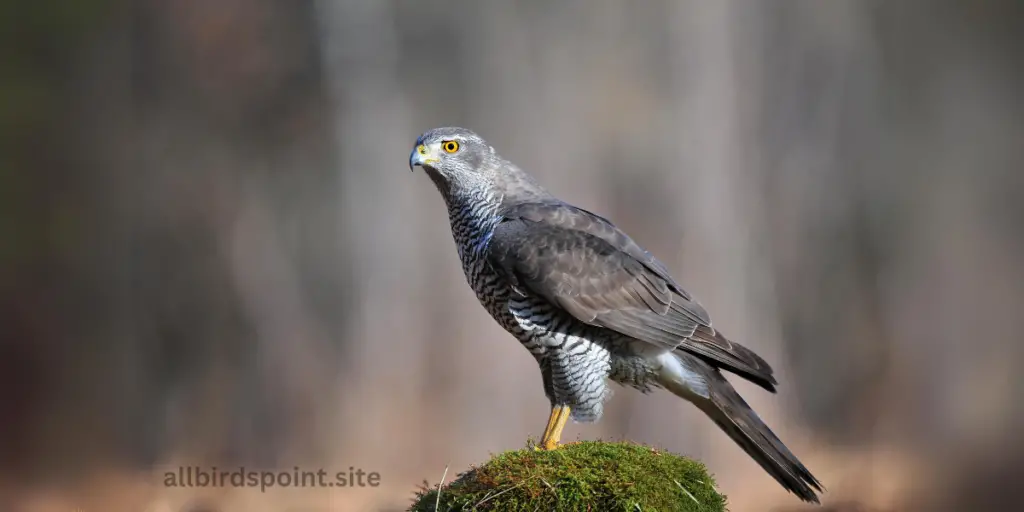
Appearance
Northern Goshawks have dark gray feathers on their back and lighter gray on their undersides. They have a bold white stripe above their eyes, giving them a fierce look. Their wings are broad, and their tails are long, helping them fly swiftly through forests.
Where Can You Find Them?
Northern Goshawks prefer dense forests, where they can easily hide and hunt. They are rarely seen in Tennessee but might be spotted in the state’s more forested areas during migration.
What Do They Eat?
These hawks are aggressive hunters and eat a variety of birds and mammals. They hunt animals as large as rabbits and squirrels but will also catch smaller birds like grouse. They are fast and agile, making them excellent predators in forested areas.
Nesting Habits
Northern Goshawks build large nests high in trees. They use sticks and soft materials like leaves to create a sturdy home for their young. The female usually lays two to four eggs, and both parents care for the chicks until they are ready to leave the nest.
10. Northern Goshawk
| Feature | Details |
|---|---|
| Scientific Name | Accipiter gentilis |
| Lifespan | 10-15 years |
| Size | 20-26 inches (50-66 cm) |
| Wingspan | 3.5-4.5 feet (105-115 cm) |
| Weight | 1.5-3.3 pounds (0.7-1.5 kg) |
| Diet | Medium-sized birds, small mammals (rabbits, squirrels) |
| Habitat | Dense forests, mountainous regions |
Interesting Fact
Northern Goshawks are known for being very protective of their nests. They will aggressively defend their territory from predators, including humans, who come too close.
Conclusion
Tennessee is home to an amazing variety of hawks, each with its unique traits, habitats, and hunting techniques. From the common Red-tailed Hawk to the rare Northern Goshawk, these birds of prey play an essential role in maintaining balance in nature by controlling small mammal and bird populations. Whether you’re an experienced birdwatcher or just enjoy the outdoors, you are sure to be captivated by the beauty and power of these hawks. Keep your eyes on the sky, and you might just spot one of these magnificent birds on your next adventure!
Frequently Asked Questions (FAQs)
1. What is the most common hawk in Tennessee?
The Red-tailed Hawk is the most common hawk in Tennessee. It is often seen perched on poles, trees, or soaring in the sky across the state.
2. How long do hawks live?
The lifespan of hawks varies by species, but most hawks in Tennessee live between 10 to 20 years in the wild. In captivity, some hawks may live even longer.
3. What do hawks eat?
Hawks are carnivores and their diet consists mostly of small mammals like mice, rabbits, and squirrels, as well as birds, reptiles, and insects.
4. Where can I see hawks in Tennessee?
Hawks can be seen throughout Tennessee in diverse habitats such as forests, fields, grasslands, and suburban areas. Red-tailed Hawks are commonly seen near highways, while species like the Northern Harrier are often spotted flying low over fields.
5. Do hawks migrate?
Yes, some hawks like the Broad-winged Hawk and Swainson’s Hawk are known for their long-distance migrations. These species travel from North America to South America during the winter.
6. How can I tell the difference between a Cooper’s Hawk and a Sharp-shinned Hawk?
While both species look similar, the Cooper’s Hawk is larger with a rounded tail, while the Sharp-shinned Hawk is smaller with a squared tail. Cooper’s Hawks also have larger heads in proportion to their body.
7. Are hawks dangerous to humans?
Hawks generally do not pose a threat to humans. They are shy and prefer to avoid human contact, although they may become defensive if their nest is threatened.
8. Do hawks return to the same nest each year?
Yes, many hawks, like the Red-tailed Hawk, will return to the same nest year after year, adding new materials to strengthen it.
9. What is the largest hawk in Tennessee?
The Ferruginous Hawk is the largest hawk species that can occasionally be seen in Tennessee. It has a wingspan of up to 5.5 feet.
10. Can I attract hawks to my backyard?
If you have a large, open yard with trees and plenty of small birds or mammals, you might occasionally attract hawks like the Cooper’s Hawk or Sharp-shinned Hawk. However, hawks are wild animals and do not typically visit backyards regularly.
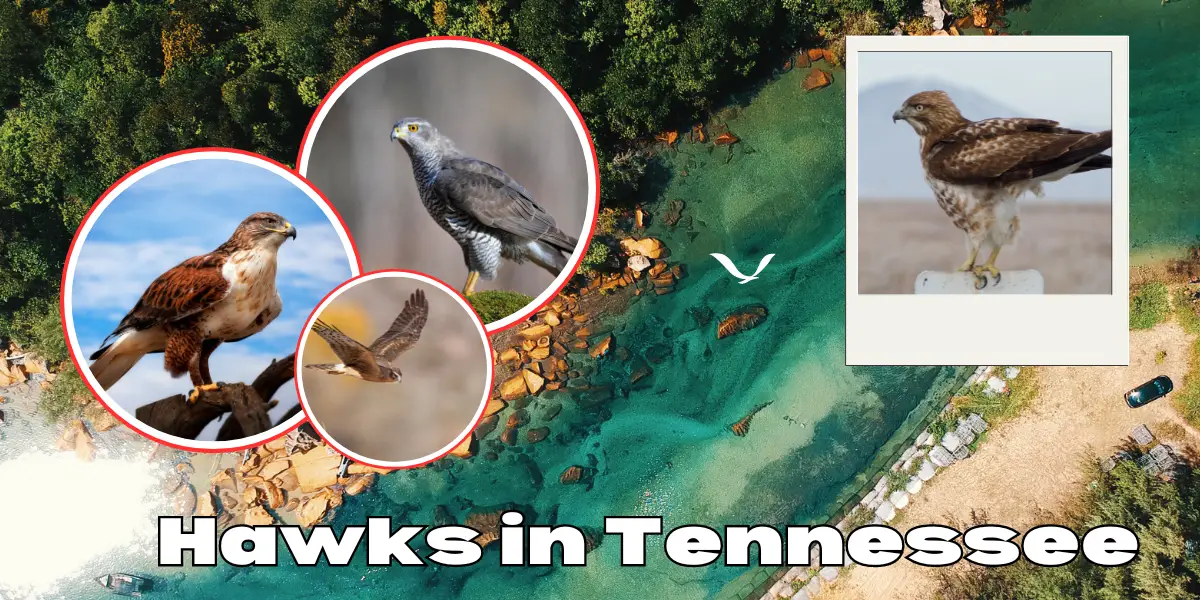
2 thoughts on “10 SPECIES OF HAWKS IN TENNESSEE (ID Guide & Photos)”